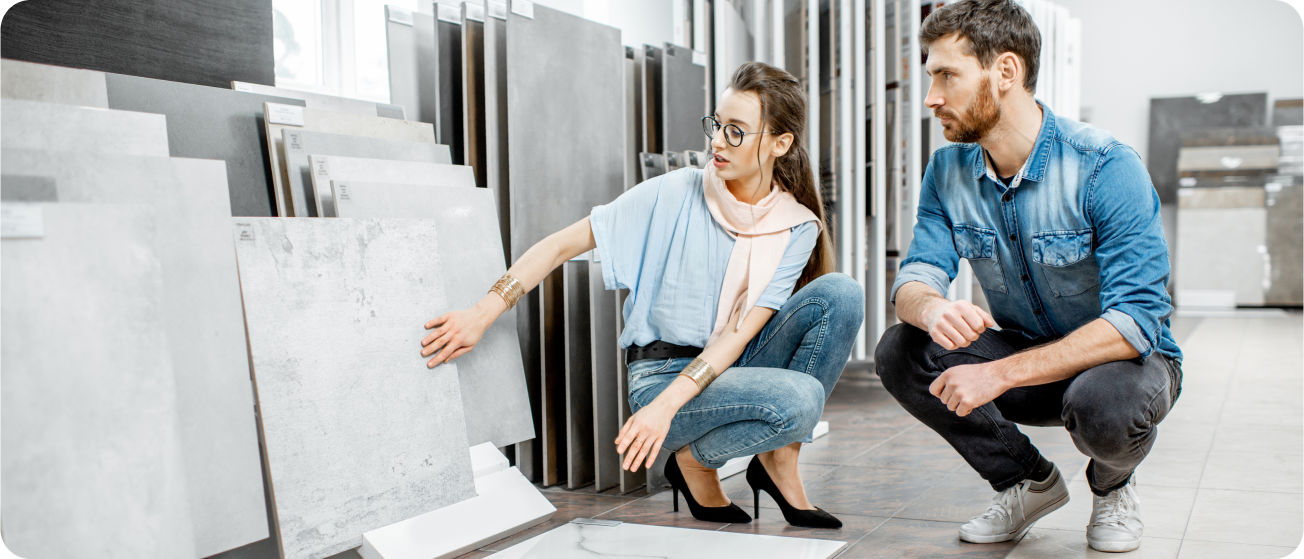The Problem(s) with Stone
We’ve all seen natural stone surfaces. Beautiful slabs of marble, granite, quartzite, or others are pleasing to the eye, and sometimes to the touch as well. But that is where the romance ends.
For example, marble is a remarkably soft stone, rating only a 3 on Moh’s Scale of Mineral Hardness, which puts it on par with your fingernail. This makes it infuriatingly easy to scratch, chip, and damage, even with casual use. While other natural stone options like granite or quartzite are significantly harder, rating a 6-7 on Moh’s Scale, they share another concern with their softer cousin.
Although it may appear smooth and solid, all natural stone is actually rather porous, which can make it very difficult to maintain. All natural stones, whether marble or granite or anything else quarried from the earth, must be regularly treated with a sealant. Otherwise, these surfaces will be very susceptible to staining by any colored liquid they encounter.
Not only does their porous nature expose them to potential stains, it also makes natural stones significantly less hygienic. Just as moisture can enter these porous surfaces, so too can soil and bacteria. So, not only do natural stones need to be kept sealed, they also need to be constantly kept clean, and cleaning will inevitably wear down sealants faster.
It says a lot that natural stone surfaces, even though they are quarried from the earth, are almost never recommended for outdoor use.
The Original Surface Innovation
Fortunately natural stone is not the only option today’s designers have at their disposal. It took Italians a couple thousand years to do it, but they eventually discovered a solution.
Porcelain is an engineered surface that dates back to at least the 3rd century, but it has only recently come into its own as a viable alternative to natural stone or ceramic surfaces.
Not only is porcelain harder than most natural stones, it’s also much less porous. Porcelain surfaces are vitrified by glazing that occurs when porcelain is fired at a temperature of around 2,250 degrees Fahrenheit. This creates a molecularly smooth, glass-like surface that ranks at a 7 or above on Moh’s scale, and does not allow for the intrusion of moisture, soil, or bacteria.
Because of this, porcelain has been highly prized for use as serving vessels and plateware for centuries. Even still, we are only just now entering the “golden age” of porcelain.
The Golden Age of Porcelain
Today, modern materials science has improved upon porcelain technology, making it far more durable than ever before. Yet, the most significant innovation it has undergone is not in its durability, but its appearance.
Designers have gotten involved with porcelain production, merging new manufacturing techniques with incredible new visions. Once relegated to moisture-prone areas like kitchens and bathrooms, porcelain can now be found everywhere, both inside and out.
Modern printing techniques allow porcelain to resemble nearly any surface you can think of, from wood to paper to fabric, and of course, natural stone. Some products such as Adorare, are so adept at capturing the look and feel of natural stone, that audiences find it difficult, if not impossible, to tell the difference.
Fortunately for you, we are living in a true golden age of porcelain, so you no longer have to choose between the beauty of natural stone, and the remarkable durability and versatility of porcelain.


